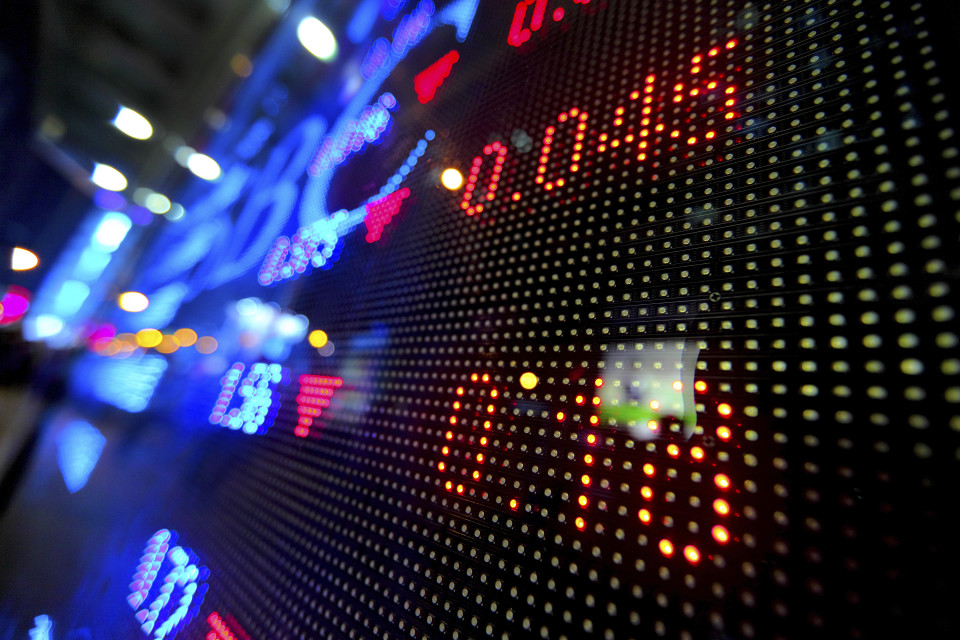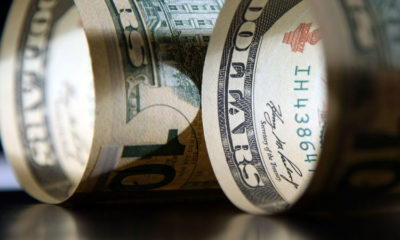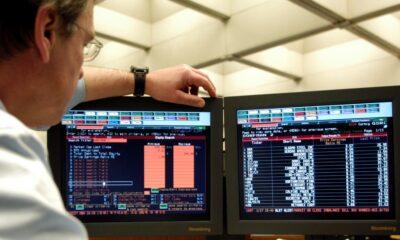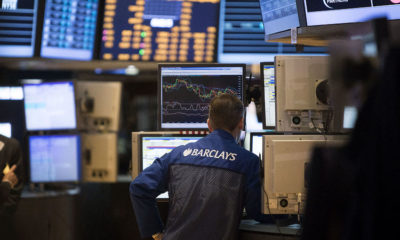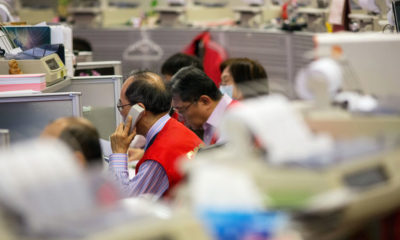The buy-the-dip mafia was out in force yesterday, with a fair bit Friday’s Wall Street and European equity sell-off unwound, as well as Friday moves in bond, currencies and commodities and energy. Notably, it hasn’t been a complete reversal by any means, as the world settles into a choppy holding pattern, for clarity about just worried, or not, we should be about the new Covid-19 omicron variant.
President Biden attempted to sooth nerves overnight, but what really drove the retracement were anecdotal reports from the South African medical establishment suggesting that symptoms were milder than delta. Always ready to selectively edit the facts to fit the prevailing market sentiment, cases popping up in multiple locations around the world (they were probably there already), kneejerk travel bans on travellers from Southern Africa (there is no evidence it originated there, they just reported it first), and in the case of Japan, all foreigners, and WHO warnings that the new variant posed a “very high” risk, were mostly ignored by investors worldwide. The fact that markets haven’t completely unwound the Friday meltdowns at least suggests a modicum of caution remains.
To be fair, having been scared by delta, much of Asia is still in ultra-cautious mode, as their recovery was only just gathering steam with borders being tentatively reopened. And one can’t blame national governments for shooting first and asking questions later, after paying the price so badly for their delta complacency earlier this year. Whether that escalates into wider restrictions than a ban on travellers from Southern Africa also remains to be seen.
It will likely be a couple of weeks before the great and good of the global scientific community can make a definitive judgement on how serious the omicron variant is. That means December is likely to be choppy and driven by omicron headlines, and the heavyweight data calendar this week, will be rendered irrelevant. All that will matter is whether more restrictions are coming back around the world, and whether central banks, especially the Fed, hit the pause button on monetary tightening plans. I already know the answer to that one. The big winner this month will be volatility, we should see plenty of it. But with markets selling everything on negative omicron headlines and clasping at the most tenuous of straws to buy everything back on any perceived positive headlines, investors looking for thematic direction moves this month, are likely to be sorely disappointed.
Markets got nothing out of the stream of Fed speakers overnight, who seemed to be going out of their way to avoid thoughts on omicron-world monetary policy. We have had some heavyweight data from Asia today though, although as I have just mentioned, it has been largely ignored. South Korean and Japanese Industrial Production was released, with the YoY data outperforming, while the MoM prints disappointed. South Korea falling -3.0%, while Japan rose on 1.10%. Electronics continued to perform well, but automotive and transport suffered due to the semiconductor bugbear. A cynic might say that the recoveries in both countries are stalling, much like the recent data from China suggests.
Speaking of China, official Manufacturing and Non-Manufacturing PMIs were released for November this morning. Manufacturing PMI managed to recover marginally into expansionary territory, creeping up to 50.1. that follows a sharp rise in Industrial Profits over the weekend, with metals refining and energy, unsurprisingly, leading the way. The data suggests China isn’t out of the woods yet though, although you wouldn’t bet against them. Non-Manufacturing PMI held steady at 52.3, with Covid-19 restrictions potentially offset by Singles Day. The general PMI rose sharply from 50.8 to 52.2, and overall, the data suggests an improvement driven by an easing of China’s power crunch and a slight easing in lending criteria to the property sector. The data is steady, rather than spectacular, and I won’t e breaking out the champagne yet.
We have a raft of GDPs across the Eurozone, as well as Eurozone November Flash Inflation, and German Unemployment this after. In the US, we have the Case-Shiller Home Price data, ad well as CB Consumer Confidence and both Janet Yellen and Jerome Powell are testifying on The Hill I believe. Sadly, unless Mr Powell says the taper will stop if omicron is serious, all of this be ignored. V is for volatility, and there is only one story in town this week, and it is invisible to the human eye.
Wall Street rebound lifts Asian equities.
Asian equity markets mostly ignored the sharp rally in US index futures yesterday morning, but with the rally consolidating in OTC markets in the US and Europe overnight, Asia feels confident about dipping its toes in the water today, although the gains are not universal. On Wall Street, investors unwound much of Friday’s sell-off drama, and despite the tenuous reasoning behind the move, always respect momentum.
The S&P 500 rose 1.32%, the Nasdaq leapt 1.88% higher, while the Dow Jones turned in a respectable 0.65% gain. In Asia, the FOMO mafia have continued pushing index futures higher with Dow futures lifting by 0.25%, and S&P 500 and Nasdaq futures booking 0.10% gains.
After a stunning downside reversal late in the Tokyo session as the government banned entry to all foreigners, the Nikkei 225 is doing what it does best today, following the Nasdaq. Softer Industrial Production data has tempered the gains, but the Nikkei 225 is still 0.60% higher. However, South Korea’s Kospi is 1.05% lower after the government shelved plans to relax Covid-19 restrictions, highlighting once again, what is really driving markets right now. Meanwhile, Mainland China markets have edged higher, the Shanghai Composite and CSI 00 rising by just 0.15%. The casino sell-off persists in Hong Kong today, the latest sector in the Chinese government spotlight, leading the Hang Seng to shed 1.20%.
Across the region, Singapore is unchanged, unable to shake of PM Lee’s comments that Covid-19 freedoms could be rolled back if necessary. Kuala Lumpur though, has risen by 0.55% with Jakarta rising by 0.40% and Bangkok climbing 1.05% as investors build a tourism premium back in once again. Manila has fallen 1.0% while Taipei has rallied by 0.80%. Australian markets, never short of herd-like optimism, or a proclivity to slavishly follow Wall Street, have rallied strongly. The All Ordinaries is 1.10% higher, while the ASX 200 has risen by 0.80%.
European markets reclaimed some losses overnight, and the price action in Asia will likely inspire more buying initially. The same is likely on Wall Street as the pull of the FOMO remains irresistible. I would caution, however, that we are just one negative omicron headline from the whole rally everywhere, evaporating into thin air.
Currency markets remain much more cautious.
Currency markets were volatile overnight but notably, the recovery rally in the US Dollar ran out of steam. US yields rose only slightly after Friday’s sharp falls. The dollar index rose nearly 50 points to test 96.50 intraday but retreated to finish just 0.13% higher at 96.19. In Asia, the last of those gains have been unwound, the index falling 0.08% to 96.11. The index looks like to trade in a choppy 95.75 to 96.50 range over the next few sessions.
Notably, Euro, Sterling and Yen all fell slightly overnight while the Swiss Franc still managed to record gains, as did the Chinese Yuan and Canadian Dollar. EUR/USD is back to 1.1300, with GBP/USD at 1.3325, while USD/JPY is holding steady at 113.65. USD/JPY will find a recovery back above 114.00 challenging this week. AUD/USD and NZD/USD booked modest gains to 0.7145 and 0.6825 overnight, suggesting caution prevails in the G-10 space regarding omicron, and both antipodeans are only just holding above their 2021 lows still at 0.7100 and 0.6800.
USD/MXN and USD/ZAR fell sharply overnight, and that sees the US Dollar is moving lower across the board versus Asian currencies today, helped along by a fall by USD/CNY to 6.3715. USD/KRW, USD/MYR, USD/INR have fallen by 0.25% while USD/SGD and USD/THB are holding steady.
In the G-10 space, currencies appear to be reflecting some well-deserved caution towards omicron still, as usual, refusing to indulge in the mindless FOMO price action in the equity space. However, in the Asian regional space, local currencies appear to be pricing in the likelihood of a slower Fed taper, or even a halt to it thanks to the new variant. It is hard to argue with either thesis at the moment.
That suggests that a lower than expected Non-Farm Payrolls number on Friday is likely to see strength in the emerging space, rather than the DM space versus the US Dollar. And omicron will likely mute any strong dollar effects from a higher than 500k print on Friday. Like other asset classes, markets will be on tenterhooks for the latest omicron headlines across the news ticker.
Oil’s recovery hits an OPEC+ wall.
Oil managed to claw back some losses overnight, but the price action was far from impressive. Brent crude left higher initially, climbing over 5.0% intra-day, but gave back almost all those gains to finish just 0.74% higher at $73.40 a barrel overnight. WTI fared slightly better, closing 2.75% higher at $70.05 a barrel, and reclaiming its 200-day moving average. (DMA) In Asia, both contracts have added another 0.80% to $73.95 and $70.55.
Brent crude appears to have a higher beta to the OPEC+ meeting, logical given it is an international pricing benchmark, whereas WTI is very much US-centric. Overnight, Russia said that other members had not contacted it regarding halting production increases at the full OPEC+ meeting later this week, and that seems to have capped Brent’s recovery. Things move quickly in OPEC+ circles though and I remain of the opinion that the odds of a temporary halt to production increases is well above 50% now, especially with OPEC+ compliance already above 100%, suggesting limited swing capacity anyway.
That said, Friday’s lows still feel like the bargain of the year if you were an oil buyer, speculative or physical. Rather than second-guessing OPEC+, I am content to watch from the side-lines from here, as oil markets will be more vulnerable than most omicron headlines and violent swings in sentiment. Heightened volatile means that long or short, you P and L can still be nought.
The respective 200-DMAs at $72.70 and $70.00 a barrel should provide some support, if for no reason that a fall to those points will send the relative strength indexes (RSIs) into oversold territory. Above, some resistance should be found at $77.00, and $74.00 a barrel respectively.
Gold looks unimpressive.
Gold’s price action continues to underwhelm, as it finished the overnight session down 0.46% at $1785.00 an ounce, before eking out a 0.20% gain to $1788.50 an ounce in Asia. There are zero signs of any safe-haven bids emerging to shelter from virus volatility, and it is falling despite both US yields and the US Dollar also falling. Gold has now closed below its 50,100 and 200 DMAs clustered between $1791.00 and $1792.50 an ounce.
Gold will have resistance at $1800.00 and $1815.00 to start the week, while yesterday’s spike to $1770.00 an ounce, will provide initial support. In between, gold may find some friends around $1780.00. Failure of $1770.00 signals a retest of $1760.00 and $1740.00 an ounce. Friends are what gold needs to find quickly though, and I do not rule out a move lower to $1720.00 this week, especially if the Non-Farms puts the Fed taper back in the spotlight and we have a lull in virus headlines.

